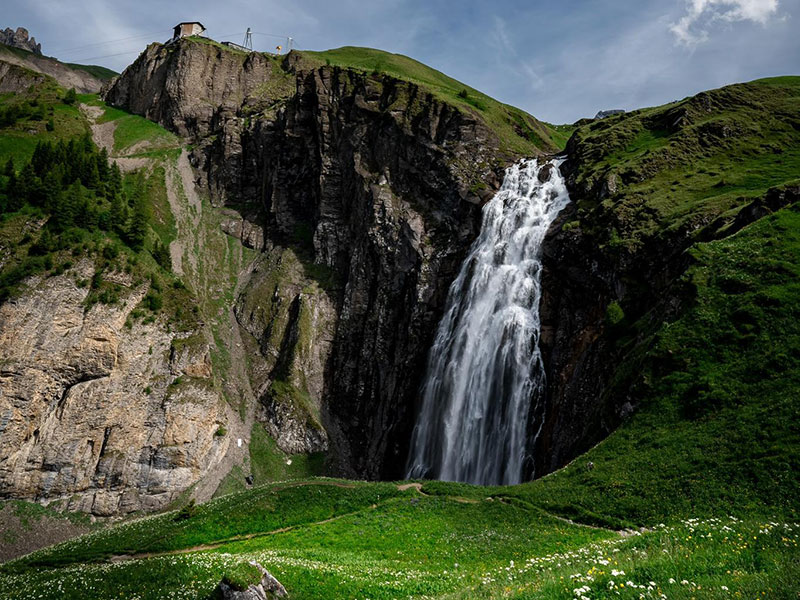Engstligenalp has a long and eventful past – many old customs and traditions are still omnipresent on Switzerland’s largest plateau. But the best thing is to read on yourself to learn more about the history of Engstligenalp…
Already in the 14th century there were four huts on Engstligenalp. At that time, robbers from the Valais are said to have taken away the cattle on the alp and set fire to the huts and the forest. Later, in the 19th century, cloth manufacturing flourished in Frutigland – so wool was very popular. That is why mainly sheep grazed on Engstligenalp. But also some Galtvieh and about 60 young horses spent the summer months on the largest plateau in Switzerland. Only one hut, the “Schäferstäfi”, stood there at that time.
Nowadays Englistenalp is a “e gminna Bärg”, i.e. a community property that can accommodate 500 head of cattle for 10 weeks. About three weeks before the Alpfahrt, the mountain accounting takes place in Frutigen, where each occupant presents his account. The train ride through the Engstligfluh is always a big event and is followed by many onlookers every year.
Since 1948, the two imposing waterfalls, which tumble 600 meters thundering and foaming into the depths, are under nature protection. At least as special are the ibexes and marmots living free on Engstligenalp. Somewhere on the largest plateau in Switzerland, edelweiss grows on the edge of the rock, and here and there water-clear rock crystals glisten in narrow rock crevices. And through the wide plain flow leisurely the glacial streams. Definitely a special place!
Already from the earliest times there are documents that can be described as tourist incidents of Engstligenalp: Every now and then, hikers “got lost” on the largest plateau in Switzerland. End of the 19th century and the beginning of the 20th century, the Müller and Bärtschi families opened the first mountain inns. Incidentally, the first aerial cableway for passenger transport in the canton of Berne also led to Engstligenalp – financed entirely from the Müller family’s own funds. The aerial cableway was inaugurated on September 12, 1937, and from then on it brought tourists to Engstligenalp in summer and winter with four-seater cabins. Around 30 years later, a second lift with 12-seater cabins was put into operation, making the long waiting times a thing of the past.
But at some point, even the Zwölferbahn could no longer cope with the emerging tourism: After the construction of the Dossen ski lift by Skilifte Engstligenalp AG, founded in 1967, the operators of the feeder lift came under increasing pressure. Finally, in 1972, the third lift, which still exists today, was put into operation with the new 40-seater cabins. Since then, two more ski lifts have been added to the winter sports facilities.
Today, thousands of tourists visit Engstligenalp every year and enjoy the peace and seclusion on the largest Swiss plateau. Thanks to its location at 2000 meters above sea level, Engstligenalp is considered very snow-sure. The winter season lasts from November to May and therefore still attracts numerous snow enthusiasts to the plateau in spring. In summer, the nature reserve with the two impressive waterfalls and the wide, flat area invites you to marvel, discover and experience.
With the takeover of the cable car Engstligenalp AG as well as the Berghotel Engstligenalp AG by the Skilifte Engstligenalp AG in 1999, the most important tourist providers of Engstligenalp are now all united under one roof.

Engstligenalp takes its philosophy of using nature sensibly and carefully much further: in 2010, the construction of a hydroelectric power plant was started – since Apri 2011, it has been reliably supplying electricity to the grid.
Today, the Engstligenalp small hydropower plant is considered a showcase example of how efficient electricity production can be achieved while taking all environmental concerns into account: The operating power plant produces nature-friendly and sustainable electricity for about 500 households and thus feeds more energy into the Adelboden power grid than is drawn for the operation of the mountain railroads and the mountain hotel.